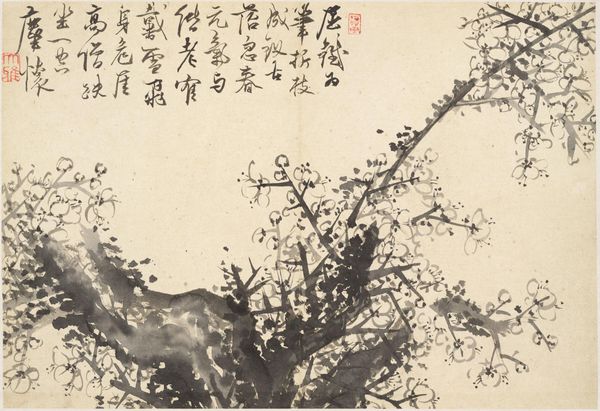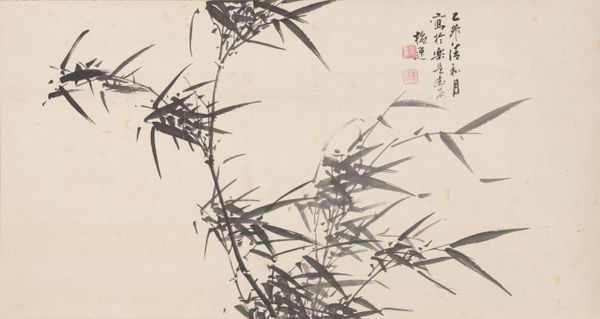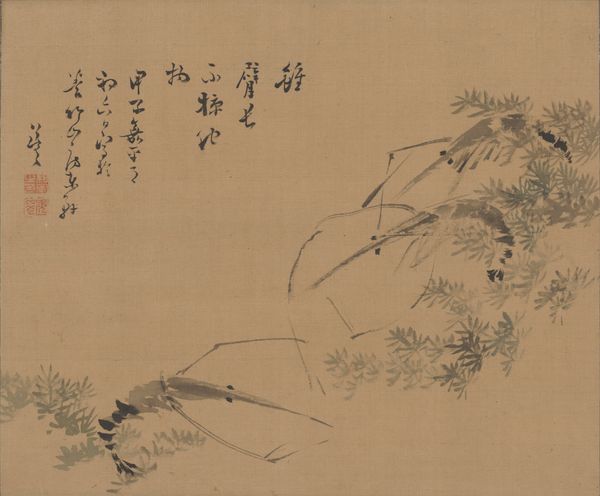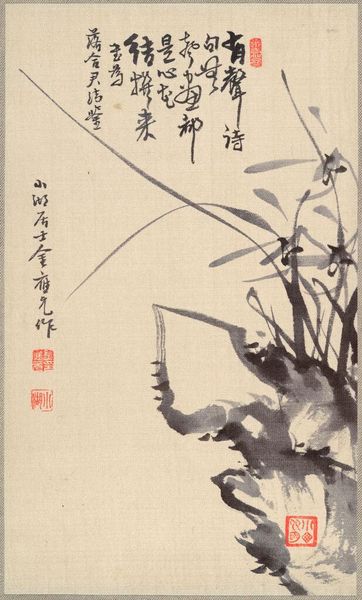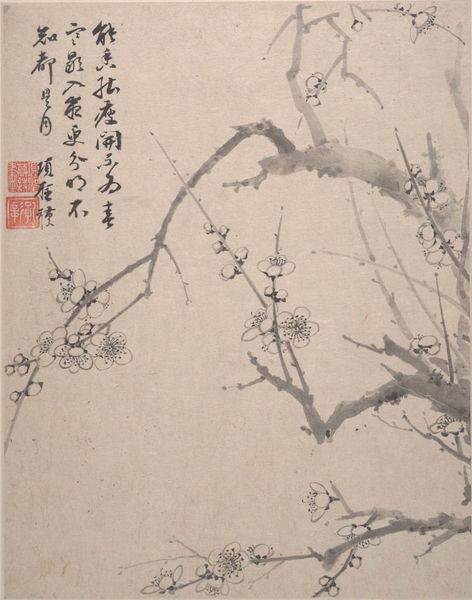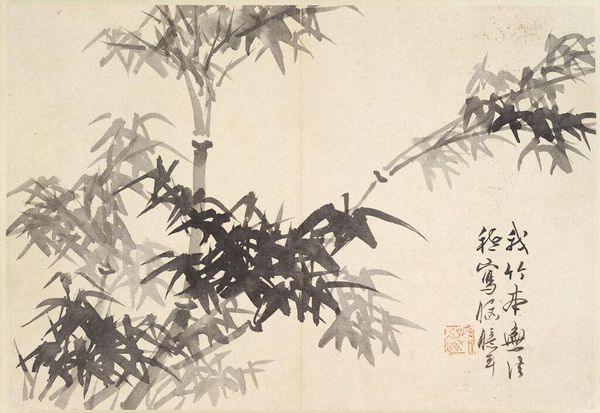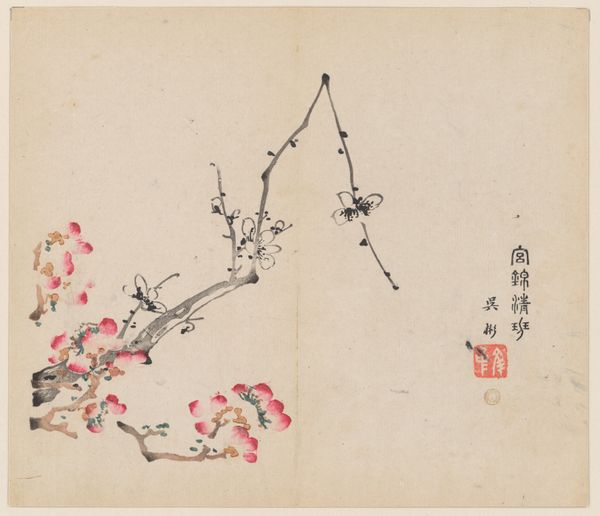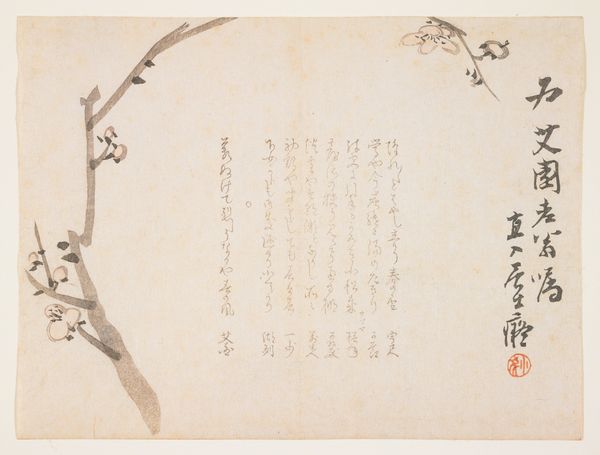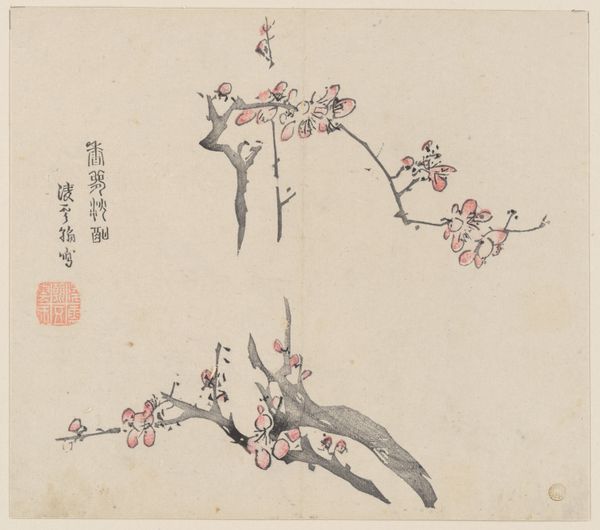
drawing, paper, ink
#
drawing
#
ink paper printed
#
asian-art
#
paper
#
form
#
ink
#
line
Dimensions: 33.0 × 44.4 cm (13 × 17 1/2 in.)
Copyright: Public Domain
Curator: Today we’re observing "Orchids," a work by Kim Eung-won that might date back to the late 14th century, or perhaps sometime before 1910, rendered with ink on paper. Editor: My first impression is that this piece has incredible dynamism. The bold strokes give it a sense of restless energy despite its minimal composition. The contrast between the dense, dark ink and the blank space creates a strong visual tension. Curator: It’s compelling how you point to the stark contrast; it highlights the symbolism of orchids within the cultural memory of Korean art. The orchid signifies scholarly refinement and integrity—a quality associated with the Joseon Dynasty's literati. Editor: The application of ink exemplifies a calligraphic aesthetic—look at the varying width and pressure of the strokes. This variance articulates both the texture of the orchid's leaves and a controlled freedom of movement. Is this what ties to that symbolisim for you? Curator: Indeed. Consider the ‘Four Gentlemen’ concept. Orchids, along with plum blossoms, chrysanthemums, and bamboo, were associated with particular virtues, reflecting the essence of moral rectitude through natural metaphors. So, a bold orchid display such as this one hints at inner strength and resilience through simplicity. Editor: I wonder if the formal qualities speak to the influence of Chan Buddhism on East Asian art. I am thinking specifically about minimalism and finding profound meaning in the seemingly empty or simple. The spare composition invites meditative contemplation. Curator: The blank spaces are equally important to the orchid rendering, indicating ‘Ma’ in zen buddhism, while emphasizing balance. This ties directly into notions of cultivated expression. A person who is centered does not feel the need to ‘fill the gaps’. Editor: Fascinating how this dialogue between ink and space can echo philosophical depth. It's more than just representing an orchid; it embodies a whole value system, formal considerations aside! Curator: It serves as a mirror reflecting the artist’s, and ultimately the viewer's, emotional, intellectual, and even moral cultivation through symbolic gestures. Editor: I’ve definitely gained an enriched perspective on this study in black and white. Thank you.
Comments
No comments
Be the first to comment and join the conversation on the ultimate creative platform.
